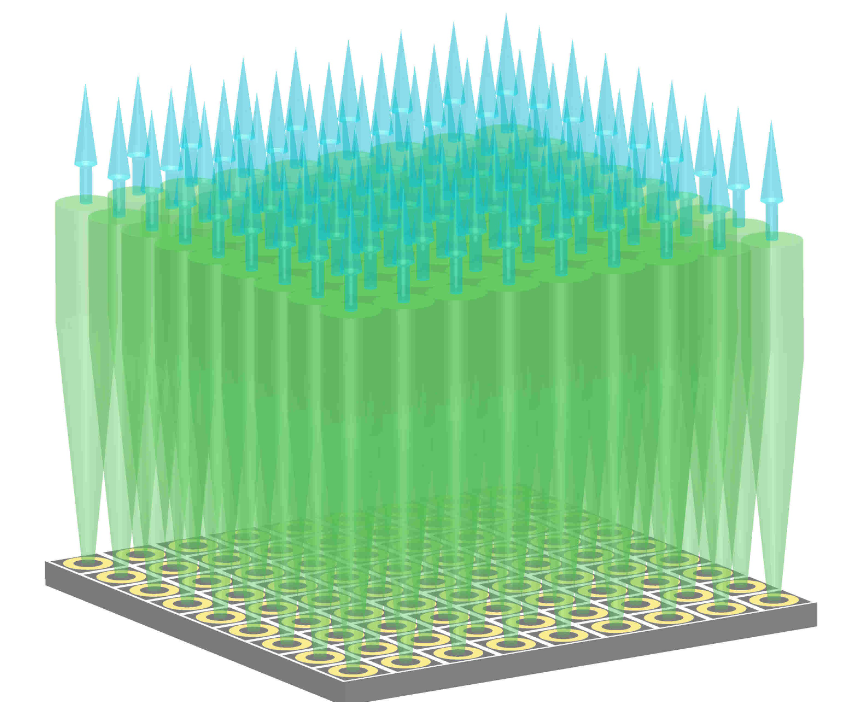
With the latest technology advancements in sensing circuits, an LED and/or VCSEL can be utilized for a variety of applications. Depending on the application, there are fundamental differences between LEDs and VCSELs. In this blog post, you’ll learn about how LEDs and VCSELs work, the role of each in sensing circuits, and their similarities and differences.
The recent rise in technologies using human vision and sensor components has led to an increased interest in LEDs and VCSEL for medical diagnosis, design for faster and more accurate systems, environmental sensing applications such as gas leakage detection, and more. To explore the application of LEDs in an environment, optical emission spectroscopy can offer some flexible ways to detect various gasses – especially if you’re trying to use a small device.
This article provides an interpretation and analysis of LEDs and VCSELs in sensing applications.
An LED is a light-emitting diode that emits light when an electric current passes through it. LEDs are used in a variety of sensing applications, such as optical sensing, medical imaging, and security systems.

A VCSEL (vertical-cavity surface-emitting laser) is a type of semiconductor laser diode with optical gain confined in a vertical direction perpendicular to the active region p-n junction. In a VCSEL, light is emitted not through the side of the chip as it is in an edge-emitting laser, but rather through the top surface where there is no confining mirror. The cavity length is much shorter than the wavelength of the emitted light, typically only several micrometres. VCSELs are used for computer mice, fiber optic communications, printing, and detection applications where the fabrication of complex external optics would be undesirable or difficult.
A LED is a semiconductor light source that emits light when current flows through it. The light emitted by an LED can be of any color, depending on the materials used to make the device. On other hand, a vertical cavity surface emitting laser is a type of LED that emits light vertically from its top surface.
Both LEDs and VCSELs can be used in sensing applications. For example, an LED can be used to detect the presence of water in a container, while a VCSEL can be used to measure the level of liquid in a tank. In both cases, the light emitted by the device is reflected off the surface of the liquid and detected by a photosensor. The amount of reflected light depends on the level of liquid, allowing the sensor to determine the level of liquid present.
LEDs and VCSELs are two of the most popular types of optical sensors for sensing applications. They can be found in a wide range of different devices and applications, with LEDs being used as temperature sensors, pico projectors, and even as part of the display on a smartphone. On the other hand, vertical cavity surface emitting lasers are used in many different types of sensors including those used for proximity detection and distance measurement.
The main difference between LEDs and VCSELs is that LEDs have very small Active Regions (the area where light is emitted). Where vertical cavity surface emitting lasers have very large Active Regions (the area where light is absorbed). That means, there is no need to worry about managing heat dissipation or cooling issues because the heat generated by an LED will dissipate quickly into the air due to its small size.
As we have seen, LEDs and VCSELs play an important role in sensing applications. They offer many advantages over traditional sensors, including lower power consumption, higher sensitivity, and smaller size. In addition, they can be used in a wide variety of applications, from simple light detection to more complex biomedical sensing. With the continued development of these technologies, likely, their use will only increase in the future.
InPhenix is a company that designs and manufactures types of lasers and light sources such as superluminescent diodes, semiconductor optical amplifiers, swept-source lasers, DFB lasers, FP lasers, LiDAR, and more. Contact us to know more about our products and solutions.
